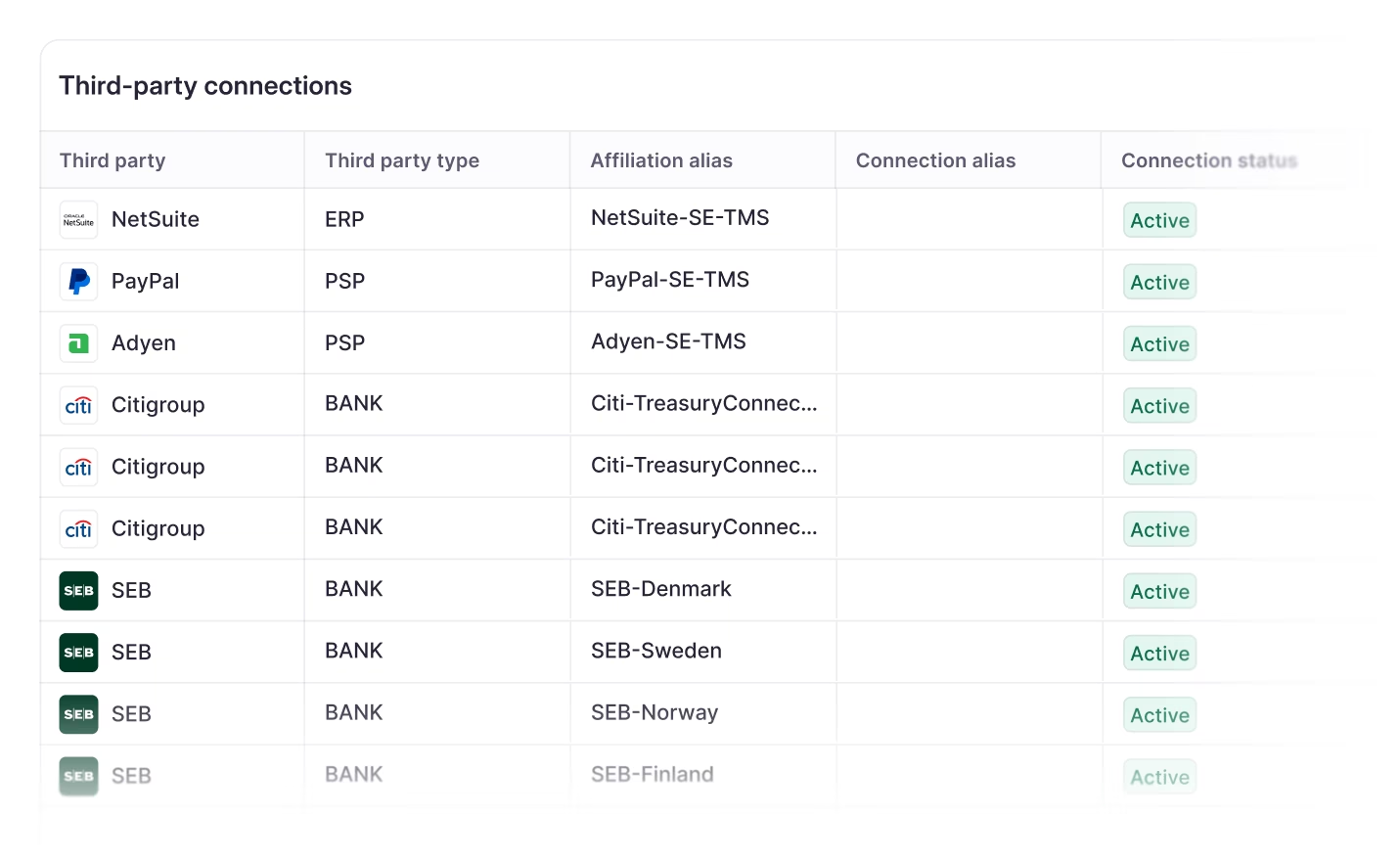Secure File Transfer Protocol (SFTP)
Secure File Transfer Protocol (SFTP) is a variant of host-to-host connectivity. It is a secure and reliable method of connecting to a bank and supports a wide range of financial operations.

Introduction to SFTP
Secure File Transfer Protocol (SFTP) is a variant of host-to-host (H2H) connectivity. It is a secure method for transferring files over a network. It builds on the file transfer capabilities of traditional FTP (File Transfer Protocol) with an extra layer of security through the SSH (Secure Shell) protocol.
SFTP is one of the most reliable ways of connecting to a bank and is used by companies of all sizes to support critical financial operations. The quality of data received via SFTP depends on the sending bank, but most banks have years of experience in implementing and maintaining SFTP connections successfully.
For an in-depth analysis of SFTP and other connectivity methods, read our full guide to bank connectivity.
How SFTP works
The process to set up an SFTP connection is as follows:
- Establishing a connection: An SFTP client (a company's treasury or ERP system) creates a connection to an SFTP server (the bank’s server) over a secure channel.
- Authentication: The client and server authenticate each other using SSH keys or credentials.
- Encryption: All data transferred over the SFTP connection is encrypted using strong encryption algorithms, ensuring confidentiality and integrity.
- File transfer: Once authenticated, files can be uploaded, downloaded, renamed, deleted, or managed on the server at will with all commands executed securely.
- Automation: SFTP can be readily automated using scripts or software tools to schedule and manage file transfers. The data exchanged can be processed as soon as it is transmitted and made available to the end user.
Pros and cons of SFTP
As with other H2H connectivity methods, SFTP ensures that financial data – including payment instructions, account statements, balance reports, and transaction details – is shared securely between the company and its banks.
SFTP is known for its robustness, reliability, and security. Encryption is used to protect data during transfer and it is trusted as a way of exchanging large volumes of financial data with banks.
SFTP is relatively easy to set up but it does require a unique connection to each bank. Since most banks send files on a daily or intraday basis, SFTP does not provide real-time capabilities. Note that some banks may only offer H2H services like SFTP to their corporate enterprise clients.
How Atlar can help with SFTP connectivity
SFTP is one of many connectivity methods supported by Atlar. Unlike other treasury software providers, Atlar manages the entire implementation end-to-end, with no work needed from our customers. This helps Atlar customers get up and running with all their banks connected in 2-3 months on average, compared to up to 18 months for a Treasury Management System (TMS). To learn more about how we tackle connectivity, get in touch with our team.
You can unsubscribe anytime.
Further reading
See Atlar in action.
Enter your work email to watch a live product demo.


